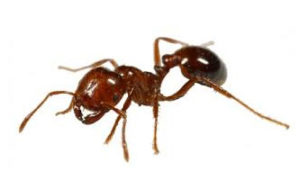
Stinging Insect Allergy
Stings from five insects – honeybees, hornets, wasps, yellow jackets and fire ants – are known to cause allergic reactions to the venom injected into the skin. While most people are not allergic to insect venom, the pain from a sting may cause them to mistake a normal reaction for an allergic one. Knowing the difference between a normal reaction and an allergic reaction might save you a trip to the doctor’s office.
Overview
Most people are not allergic to insect stings. Recognizing the difference between an allergic reaction and a normal reaction will reduce anxiety and prevent unnecessary medical expense.
Thousands of people enter hospital emergency rooms or urgent care clinics every year suffering from insect stings. It has been estimated that potentially life-threatening allergic reactions occur in 0.4% – 0.8% of children and 3% of adults. At least 90 – 100 deaths per year result from insect sting anaphylaxis.
The majority of insect stings in the United States come from wasps, yellow jackets, hornets and honeybees. The red or black imported fire ant now infests more than 260 million acres in the southern United States, where it has become a significant health hazard and may be the number one agent of insect stings.
Insect Sting Allergy Symptoms
- Pain
- Redness
- Swelling (in area of sting and sometimes beyond)
- Flushing
- Hives
- Itching
- Anaphylaxis (less common), a potentially life-threatening reaction that may impair breathing and can cause the body to go into shock

Diagnosing
Your allergist should take a detailed medical history, including questions about previous stings (how many there have been and where you were stung), your reaction to those stings (what you experienced, how long the reaction lasted and what you did to get relief) and any additional symptoms.
Your allergist may perform one or more tests to diagnose allergy to insect venom, such as a skin-prick test, an intradermal skin test or a blood test.
In the skin-prick test, a small amount of a liquid containing insect venom is placed on the back or forearm, which is then pricked with a small, sterile probe to allow the liquid to seep into the skin. If a raised, reddish spot forms within 15 to 20 minutes, that can indicate an allergy. In the blood test, a blood sample is sent to a laboratory to test for the presence of immunoglobulin E (IgE) antibodies to insect venom.
If the skin prick test is negative or inconclusive your allergist will likely recommend an intradermal skin test, in which a small amount of venom extract is injected just under the skin. The site is examined after about 15 minutes for signs of an allergic reaction. This test is considered more accurate than the skin-prick or blood tests in determining the presence of IgE antibodies. If both skin prick and intradermal skin tests are negative then your allergist may recommend a blood test.
The strength of a reaction to a skin or blood test does not indicate how severe your allergic reaction will be the next time you are stung
Symptoms
A large local reaction will result in swelling that extends beyond the sting site. For example, a sting on the forearm could result in the entire arm swelling. Although alarming in appearance, this condition is often treated the same as a normal reaction. An unusually painful or very large local reaction may need medical attention. Because this condition may persist for two to three days, antihistamines and corticosteroids are sometimes prescribed to lessen the discomfort.
Fire ants, yellow jackets, hornets and wasps can sting repeatedly. Honeybees have barbed stingers that are left behind in their victim’s skin. These stingers are best removed by a scraping action, rather than a pulling motion, to avoid squeezing more venom into the skin.
Almost everyone stung by fire ants develops an itchy, localized hive or lump at the sting site, which usually goes down within 30 to 60 minutes. This is followed by a small blister within four hours. This usually appears to become filled with pus-like material by eight to 24 hours. However, what is seen is really dead tissue, and the blister has little chance of being infected unless it is opened. When healed, these lesions may leave scars.
Treatment for fire ant stings is aimed at preventing secondary bacterial infection, which may occur if the pustule is scratched or broken. Clean the blisters with soap and water to prevent secondary infection. Do not break the blister. Topical corticosteroid ointments and oral antihistamines may relieve the itching associated with these reactions
The most serious reaction to an insect sting is an allergic one. This condition requires immediate medical attention. Symptoms of an allergic reaction may include one or more of the following:
- Hives, itching and swelling in areas other than the sting site
- Abdominal cramping, vomiting, intense nausea or diarrhea
- Tightness in the chest and difficulty in breathing
- Hoarse voice or swelling of the tongue or throat, or difficulty swallowing
An even more severe allergic reaction, or anaphylaxis, can occur within minutes after the sting and may be life-threatening. A dose of epinephrine (adrenaline), typically administered in an auto-injector, and immediate medical attention are required. Symptoms may include:
- Dizziness or a sharp drop in blood pressure
- Loss of consciousness or cardiac arrest
People who have experienced an allergic reaction to an insect sting have a 60% chance of a similar or worse reaction if stung again.